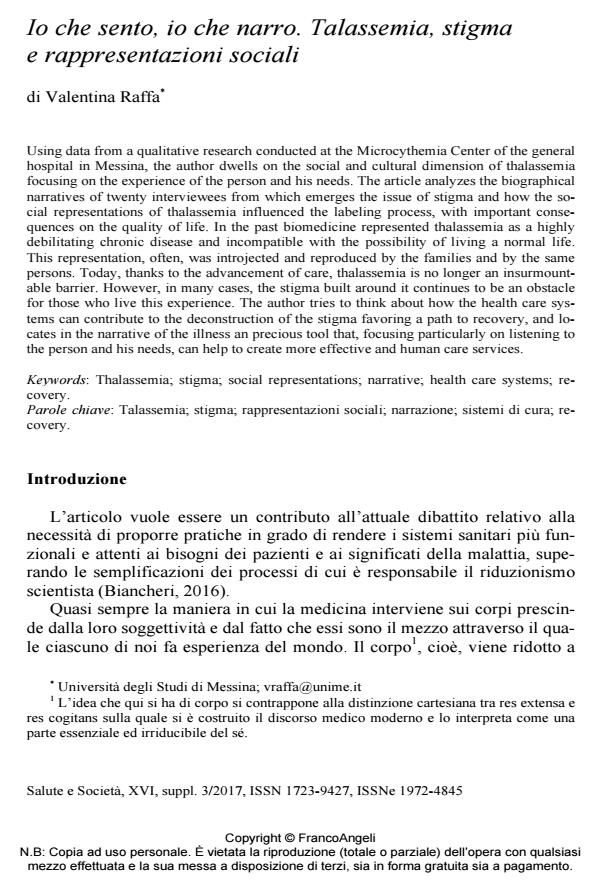Io che sento, io che narro. Talassemia, stigma e rappresentazioni sociali
Journal title SALUTE E SOCIETÀ
Author/s Valentina Raffa
Publishing Year 2017 Issue 2017/3-Suppl.
Language Italian Pages 20 P. 162-181 File size 113 KB
DOI 10.3280/SES2017-SU3011
DOI is like a bar code for intellectual property: to have more infomation
click here
Below, you can see the article first page
If you want to buy this article in PDF format, you can do it, following the instructions to buy download credits

FrancoAngeli is member of Publishers International Linking Association, Inc (PILA), a not-for-profit association which run the CrossRef service enabling links to and from online scholarly content.
Using data from a qualitative research conducted at the Microcythemia Center of the general hospital in Messina, the author dwells on the social and cultural dimension of thalassemia focusing on the experience of the person and his needs. The article analyzes the biographical narratives of twenty interviewees from which emerges the issue of stigma and how the social representations of thalassemia influenced the labeling process, with important consequences on the quality of life. In the past biomedicine represented thalassemia as a highly debilitating chronic disease and incompatible with the possibility of living a normal life. This representation, often, was introjected and reproduced by the families and by the same persons. Today, thanks to the advancement of care, thalassemia is no longer an insurmountable barrier. However, in many cases, the stigma built around it continues to be an obstacle for those who live this experience. The author tries to think about how the health care systems can contribute to the deconstruction of the stigma favoring a path to recovery, and locates in the narrative of the illness an precious tool that, focusing particularly on listening to the person and his needs, can help to create more effective and human care services.
Keywords: Thalassemia; stigma; social representations; narrative; health care systems; re-covery.
Valentina Raffa, Io che sento, io che narro. Talassemia, stigma e rappresentazioni sociali in "SALUTE E SOCIETÀ" 3-Suppl./2017, pp 162-181, DOI: 10.3280/SES2017-SU3011